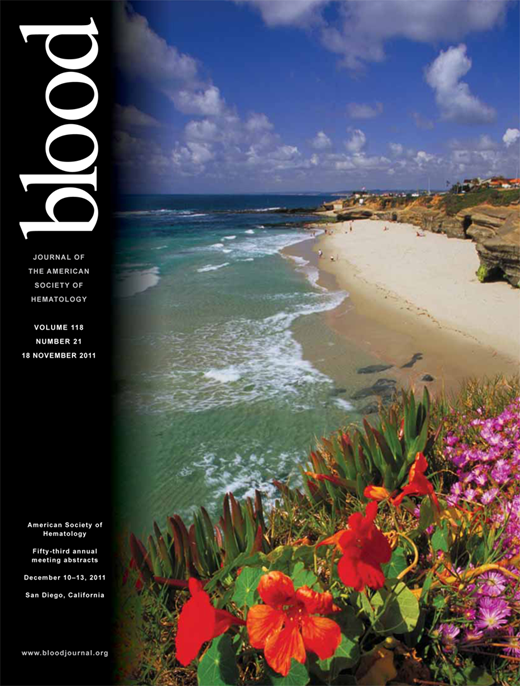Abstract
Acute myeloid leukemia (AML) is characterized by various molecular abnormalities impairing differentiation and promoting proliferation. Survivin, a small inhibitor-of-apoptosis protein encoded by the BIRC5 gene, plays a critical role in apoptosis, cell division and proliferation. Relatively small studies in AML have previously shown expression of Survivin and its splice variants correlates with patient survival, white cell count and cytogenetics. Recent data have also demonstrated that Survivin is a transcriptional target of the FLT3-STAT pathway and regulates proliferation of FLT3-mutated AML.
We performed complete molecular and expression characterization of the Survivin (BIRC5) gene in childhood AML. The entire coding sequence of the BIRC5 gene was sequenced in diagnostic specimens from 100 children with AML. No disease associated alterations were identified in the 100 patients tested. We further performed quantitative Survivin mRNA expression in 306 patients as well as evaluated for Survivin transcript splice variants in 96 patients with de novo AML treated on two multi-centre clinical trials (CCG-2961 and AAML03P1) to test the hypothesis that Survivin expression would correlate with both FLT3 mutational status and clinical outcome.
Quantitative Survivin expression in AML blasts from diagnostic samples was performed by RT-PCR using TaqMan. When normalized to Survivin expression in normal peripheral blood mononuclear cells, Survivin expression >1.0 correlated with an immature phenotype (FAB M0 12% vs. 1%, P = 0.001), monosomy 7 (11% vs. 1%, P = 0.008) and risk group. 26% of high Survivin expressors (> 1.0) were high risk vs. 12% of low expressors (P = 0.024). Conversely, 37% of low expressors (≤1.0) were low risk compared to 16% of high expressors (P = 0.011). Correlation of Survivin expression level with clinical outcome failed to show association with remission status or clinical outcome.
Splice variants were identified by amplification of the entire BIRC5 transcript and fragment length analysis of the amplified products. Three distinct splice variants were identified with the most prominent product (peak 2), identified as Survivin-wt, expressed in all samples tested. Expression of the smaller isoform (peak 1) and larger isoform (peak 3) varied from patient to patient. Ratio of peak 3 (P3) to peak 1 (P1) product was determined for each patient (P3/P1 ratio) as a measure of expression of the two variants. Alternate variant ratio varied from 0 (primarily P1 product) to >10 (primarily P3 product). Clinical and laboratory characteristics and outcome was evaluated in patients with isoform ratio ≥1 vs. those with lower ratio.
A P3/P1 ratio ≥1 was present in 24% of patients (n = 22) and was associated with high WBC count (median WBC 69.4 vs. 19.4 x103/uL, P = 0.025), M5 FAB phenotype (36 vs. 12%, P = 0.02) and +8 cytogenetics (46% vs. 0 %, P < 0.001). In support of our initial hypothesis, there was a trend toward a lower P3/P1 ratio (<1) in patients wild-type for FLT3 (78% vs. 55%, P = 0.054). The correlation between P3/P1 and clinical outcome was of most interest. Patients with a P3/P1 ratio ≥1 had significantly lower complete remission rates and higher rates of induction failure after both course 1 (45% vs. 88%, P < 0.001 and 23% vs. 3%, P = 0.009 respectively) and course 2 of induction therapy (57% vs. 80%, P = 0.044 and 24% vs. 5%, P = 0.026 respectively). Consistent with the poor response to induction, patients with a P3/P1 ratio ≥1 had dramatically inferior 5 year overall (36 vs. 60%, P = 0.011) and event-free survival (23 vs. 53%, P = 0.001) than those with P3/P1 <1. When analyzed by risk-group, this correlation remained significant in standard and high-risk patients but not low-risk patients.
In summary, these data suggest that the presence of a high P3/P1 ratio of alternate Survivin splice variants is strongly associated with refractory disease and inferior outcome for children with de novo AML. The biological reasons underpinning these findings are yet to be delineated, but it is plausible the ratio of alternate Survivin splice variants promotes the anti-apoptotic functions of Survivin, reducing the ability of cytotoxic chemotherapy to induce cell death.
No relevant conflicts of interest to declare.

This icon denotes a clinically relevant abstract
Author notes
Asterisk with author names denotes non-ASH members.

